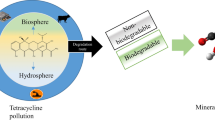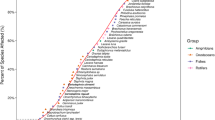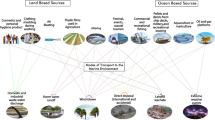Abstract
Aquatic animals are popular for their unique umami and high-quality protein. However, under the realistic background of increasing marine pollution, whether it affects the aquatic animal tastes, and what the interference mechanism is still remains unknown. Benzo[a]pyrene (B[a]P) is a typical Polycyclic aromatic hydrocarbons (PAHs) with high toxicity. In this study, we investigated the effects of B[a]P (0, 0.8, 4 and 20 μg/L) on the content and taste evaluation of Ruditapes philippinarum taste substances, and clarified the interference mechanism of B[a]P on taste substance metabolisms with transcriptome analysis. The results demonstrated that B[a]P significantly altered the contents and taste activity values (TAVs) of free amino acids (FAAs), 5′-nucleotides, organic acids, flavor peptides, organic bases, sugars and inorganic ions, as well as the gene expressions within their synthesis and decomposition, indicating that B[a]P affected these taste substance contents by interfering with their metabolisms, thereby changing the clam tastes (decreases of umami and sweetness, and increase of bitter taste). This study provided scientific basis for quality assurance of bivalve cultivation and control of marine pollution.
Graphical abstract













Similar content being viewed by others
Data availability
All data generated or analyzed during this study are included in this published article.
References
Baumard P, Budzinski H, Garrigues P (1998) Polycyclic aromatic hydrocarbons (PAHs) in sediments and mussels of the Western Mediterranean Sea. Environ Toxicol Chem 17(5):765–776
Bi SJ, Chen LP, Sun ZK, Wen YQ, Xue QQ, Xue CH, Li ZJ, Sun C, Wei ZH, Liu HY (2021) Investigating influence of aquaculture seawater with different salinities on non-volatile taste-active compounds in Pacific oyster (Crassostrea gigas). J Food Meas Charact 15(2):2078–2087
Bonsignore M, Manta DS, Sharif EAA, D’Agostino F, Traina A, Quinci EM, Giaramita L, Monastero C, Benothman M, Sprovieri M (2018) Marine pollution in the Libyan coastal area: environmental and risk assessment. Mar Pollut Bull 128:340–352
Borneff J, Kunt H (1965) Kanzerogene Substanzen in Wasser und Boden. XVII. Uber die Herkunft und Bewerteung der polyzyklischen, aromatischen Kohlenwaserstoffe im Wasser. Archiv fur Hygiene und Bakteriologie 149(3):226–243
Cappello T, Maisano M, Mauceri A, Fasulo S (2017) H-1 NMR-based metabolomics investigation on the effects of petrochemical contamination in posterior adductor muscles of caged mussel Mytilus galloprovincialis. Ecotoxicol Environ Saf 142:417–422
Chen DW, Su J, Liu XL, Yan DM, Lin Y (2012) Taste evaluation of non-volatile taste compounds in bivalve mollusks from Beibu Gluf, Guangxi. Food Science 33(10):165–168
Chen H, Diao XD, Wang HH, Zhou HL (2018) An integrated metabolomic and proteomic study of toxic effects of Benzo[a]pyrene on gills of the pearl oyster Pinctada martensii. Ecotoxicol Environ Saf 156:330–336
Chen LH, Zeng WH, Rong YZ, Lou B (2021) Characterisation of taste-active compositions, umami attributes and aroma compounds in Chinese shrimp. Int J Food Sci Technol 56(12):6311–6321
Chen WW, Li X, Zhao Y, Chen SJ, Yao HZ, Wang H, Wang CL, Wu QY (2022) Effects of short-term low salinity stress on non-volatile flavor substances of muscle and hepatopancreas in Portunus trituberculatus. J Food Compos Anal 109:104520
Costello C, Cao L, Gelcich S, Cisneros-Mata MA, Free CM, Froehlich HE, Golden CD, Ishimura G, Maier J, Macadam-Somer I, Mangin T, Melnychuk MC, Miyahara M, de Moor CL, Naylor R, Nostbakken L, Ojea E, O'Reilly E, Parma AM, Plantinga AJ, Thilsted SH, Lubchenco J (2020) The future of food from the sea. Nature 588(7836):95-+
Fan LC, Xiao T, Xian CN, Ding W, Wang XC (2022) Effect of short-term frozen storage on taste of gonads of female Eriocheir sinensis and the classification of taste quality combined with sensory evaluation and fuzzy logic model. Food Chem 378:132105
Fasulo S, Iacono F, Cappello T, Corsaro C, Maisano M, DAgata A, Giannetto A, Domenico E, Parrino V, Paro G (2012) Metabolomic investigation of Mytilus galloprovincialis (Lamarck 1819) caged in aquatic environments. Ecotoxicol Environ Saf 84:139-146
Grigorakis K (2007) Compositional and organoleptic quality of farmed and wild gilthead sea bream (Sparus aurata) and sea bass (Dicentrarchus labrax) and factors affecting it: a review. Aquaculture 272(1):55–75
Guo H, Liang Z, Zheng PH, Li L, Xian JA, Zhu XW (2021) Effects of nonylphenol exposure on histological changes, apoptosis and time-course transcriptome in gills of white shrimp Litopenaeus vannamei. Sci Total Environ 781:146731
Huang GX, Lai CH, Li JS, Wei FW, Chen YQ (2012) The extract and determined of trimethylamine N-oxide in six sort aquatic animals. Food Sci Technol 37(7):305–307
Ji Y, Hebbring S, Zhu H, Jenkins GD, Biernacka J, Snyder K, Drews M, Fiehn O, Zeng Z, Schaid D, Mrazek DA, Kaddurah-Daouk R, Weinshilboum RM (2011) Glycine and a glycine dehydrogenase (GLDC) SNP as citalopram/escitalopram response biomarkers in depression: pharmacometabolomics-informed pharmacogenomics. Clin Pharmacol Ther 89(1):97–104
Ji CL, Wu HF, Wei L, Zhao JM, Yu JB (2013) Proteomic and metabolomic analysis reveal gender-specific responses of mussel Mytilus galloprovincialis to 2,2 ’,4,4 ’-tetrabromodiphenyl ether (BDE 47). Aquat Toxicol 140:449–457
Jiang QC, Zhang WY (2021) Gradual effects of gradient concentrations of polystyrene nanoplastics on metabolic processes of the razor clams. Environ Pollut 286:117631
Job V, Marcone GL, Pilone MS, Pollegioni L (2002) Glycine oxidase from Bacillus subtilis: characterization of a new flavoprotein. J Biol Chem 277(9):6985–6993
Johanns M, Ruys SPD, Houddane A, Vertommen D, Herinckx G, Hue L, Proud CG, Rider MH (2017) Direct and indirect activation of eukaryotic elongation factor 2 kinase by AMP-activated protein kinase. Cell Signal 36:212–221
Kanzari F, Syakti AD, Asia L, Malleret L, Piram A, Mille G, Doumenq P (2014) Distributions and sources of persistent organic pollutants (aliphatic hydrocarbons, PAHs, PCBs and pesticides) in surface sediments of an industrialized urban river (Huveaune), France. Sci Total Environ 478:141–151
Li JS, Yang J, Yan LJ, Lai CH (2012a) Research progress in the fish flavor and product processing related with trimethylamine oxide. Sci Technol Food Ind 33(3):388–390
Li XG, Deng W, Zhou X, Tang XL, Guo XY, Wang Y (2012b) Distribution of PAHs in surface seawater of Qingdao coast area and their preliminary apportionment. Huanjing Kexue 33(3):741–745
Li BS, Song K, Meng J, Li L, Zhang GF (2017) Integrated application of transcriptomics and metabolomics provides insights into glycogen content regulation in the Pacific oyster Crassostrea gigas. BMC Genomics 18:713
Liang Y, Morigen (2018) The aspartate-mediated coordination of cell proliferation. Chin J Cell Biol 40(4):573-584
Liu Y, Gong XG, Xu YJ, Zhang J, An HG, Zhang XZ (2014) Determination and comparative analysis of flavor-enhancing nucleo-tides and amino acids in three common shellfish from offshore Yantai. J Fish Sci China 21(2):351–360
Liu CS, Meng FT, Tang XM, Shi YH, Wang AM, Gu ZF, Pan Z (2018) Comparison of nonvolatile taste active compounds of wild and cultured mud crab Scylla paramamosain. Fish Sci 84:897–907
Livak KJ, Schmittgen TD (2001) Analysis of relative gene expression data using realtime quantitative PCR and the 2(T)(-Delta Delta C) method. Methods 25:402–408
Lu D, Insel PA (2013) Hydrolysis of extracellular ATP by ectonucleoside triphosphate diphosphohydrolase (ENTPD) establishes the set point for fibrotic activity of cardiac fibroblasts. J Biol Chem 288:19040–19049
Maiti A, Daschakraborty S (2021) Effect of TMAO on the structure and phase transition of lipid membranes: potential role of TMAO in stabilizing cell membranes under osmotic stress. J Phys Chem B 125:1167–1180
Pejaver RK, Watson AH (1994) Glutathione synthetase deficiency - a family report. J R Soc Med 87(3):171–171
Rampazzo C, Mazzon C, Reichard P, Bianchi V (2002) 5’-Nucleotidases: specific assays for five different enzymes in cell extracts. Biochem Biophys Res Commun 293(1):258–263
Sakagishi Y (1995) Alanine aminotransferase (ALT). Nihon rinsho. Jpn J Clin Med 53:1146–1150
Sampaleanu LM, Yu BMN, Howell PL (2002) Mutational analysis of duck delta 2 crystallin and the structure of an inactive mutant with bound substrate provide insight into the enzymatic mechanism of argininosuccinate lyase. J Biol Chem 277(6):4166–4175
Sarria-Villa R, Ocampo-Duque W, Paez M, Schuhmacher M (2016) Presence of PAHs in water and sediments of the Colombian Cauca River during heavy rain episodes, and implications for risk assessment. Sci Total Environ 540:455–465
Smith TM, Kirley TL (2006) The calcium activated nucleotidases: a diverse family of soluble and membrane associated nucleotide hydrolyzing enzymes. Purinergic Signal 2(2):327–333
Sun LN, Sun JC, Xu QZ, Li XN, Zhang LB, Yang HS (2017) Metabolic responses to intestine regeneration in sea cucumbers Apostichopus japonicus. Comp Biochem Physiol D-Genom Proteom 22:32–38
Tang JH, Wang X, Yin J, Han YR, Yang J, Lu XY, Xie TC, Akbar S, Lyu K, Yang Z (2019) Molecular characterization of thioredoxin reductase in waterflea Daphnia magna and its expression regulation by polystyrene microplastics. Aquat Toxicol 208:90–97
Wang C, Chen AH, Yao GZ, Cao Y, Wu YP, Zhang Y, Cai YX (2016) Comparison and analysis of umami substances of four Meretrix meretrix populations. Mar Sci 40(9):45–52
Wang HY, Wang YC, Kuan PL, Tseng YC (2018) Glutamate-glutamine metabolism in Euryhaline Tilapia (Oreochromis mossambicus) muscle under salinity challenges. J Taiwan Fish Res 26(2):33–45
Wu JW, Egusa A, Nishimura T (2022) Carnosine synthase deficiency in mice affects protein metabolism in skeletal muscle. Biochem Biochem Res Commun 612:22–29
Xiao DF, Zeng LM, Yao K, Kong XF, Wu GY, Yin YL (2016) The glutamine-alpha-ketoglutarate (AKG) metabolism and its nutritional implications. Amino Acids 48(9):2067–2080
Xie F, Xiao P, Chen D, Xu L, Zhang B (2012) miRDeepFinder: a miRNA analysis tool for deep sequencing of plant small RNAs. Plant Mol Biol 80:75–84
Yan XW (2005) The culture biology and technology and selective breeding in Manila clam Ruditapes philippinarum. Institute of Oceanology, Chinese Academy of Science
Yao LL, Pan LQ, Guo RM, Miao JL (2017) Expression profiles of different glutathione S-transferase isoforms in scallop Chlamys farreri exposed to benzo a pyrene and chrysene in combination and alone. Ecotoxicol Environ Saf 142:480–488
Yong-Kook K, Young-Sang J, Jong-Chul P, Jungju S, Man-Sik C (2012) Characterizing the effect of heavy metal contamination on marine mussels using metabolomics. Mar Pollut Bull 64(9):1874–1879
Yu N, Ding QQ, Li EC, Qin JG, Wang XD (2018) Growth, energy metabolism and transcriptomic responses in Chinese mitten crab (Eriocheir sinensis) to benzo[a]pyrene (BaP) toxicity. Aquat Toxicol 203:150–158
Zhang MX, Wang XC, Liu Y (2012) Determination of the carnosine and glutathione from Takifugu obscurus by thin layer chromatography and high performance liquid chromatography. Nat Product Res Dev 24:928–932
Funding
This work was supported by the National Natural Science Foundation of China (32273106).
Author information
Authors and Affiliations
Contributions
Yaqi Bi: Conceptualization, Methodology, Investigation, Formal analysis, Resources, Writing—original draft. Aimin Song: Conceptualization, Methodology, Resources. Luqing Pan: Conceptualization, Resources. Jingjing Miao: Conceptualization, Resources, Writing—review & editing. Yueyao Zhou: Conceptualization, Writing—review & editing. Zeyuan Li: Investigation.
Corresponding author
Ethics declarations
Ethics approval and consent to participate
All experimental procedures were conducted in conformity with institutional guidelines for the care and use of laboratory animals, and protocols were approved by the Institutional Animal Care and Use Committee in Ocean University of China, Qingdao, China.
Consent for publication
Additional informed consent was obtained from all individual participants for whom identifying information is included in this article.
Competing interests
The authors declare no competing interests.
Additional information
Responsible Editor: Bruno Nunes
Publisher's Note
Springer Nature remains neutral with regard to jurisdictional claims in published maps and institutional affiliations.
Highlights
• Firstly analyzed the effects of POPs on change features of bivalve taste substances.
• Firstly clarified the impact mechanism of POPs on bivalve taste substance metabolism.
• Affirmed the impact difference of POPs on taste substances in different sex bivalves.
Supplementary information
Below is the link to the electronic supplementary material.
Rights and permissions
Springer Nature or its licensor (e.g. a society or other partner) holds exclusive rights to this article under a publishing agreement with the author(s) or other rightsholder(s); author self-archiving of the accepted manuscript version of this article is solely governed by the terms of such publishing agreement and applicable law.
About this article
Cite this article
Bi, Y., Song, A., Pan, L. et al. Interference mechanism of benzo[a]pyrene exposure on the taste substance metabolisms in Ruditapes philippinarum. Environ Sci Pollut Res 31, 12019–12035 (2024). https://doi.org/10.1007/s11356-024-31906-0
Received:
Accepted:
Published:
Issue Date:
DOI: https://doi.org/10.1007/s11356-024-31906-0




